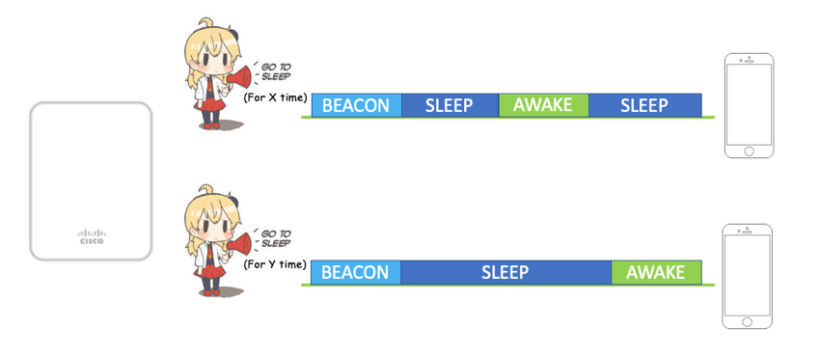What is it?
It is the new generation of wireless networks which includes many features to help increase speed, capacity, performance and power efficiency.
Features, which features?
Well, as with many standards it is in itself a bunch of different features. The first and more appealing is, for simplification, its own name, it will be the first generation using the simplified system generational system Wi-Fi 6 (being 802.11.ac Wi-Fi 5 and 802.11n)
Something to be relieved about when there is a new technology, is:
Backwards compatible: as with all the previous generations, any Wi-Fi 6 Access Point will be able to talk with any older generation device.
Let’s start with what new technology it offers:
– MU-MIMO: this is expanded up to 8 concurrent clients. In comparison, with 802.11ac you could have up to 4 clients, but there wasn’t a mandatory implementation, resulting in it not being implemented in most wireless clients.
– Orthogonal Frequency Division Multiple Access: as of now, before Wi-Fi 6, we were using OFDM (Orthogonal Frequency Division Multiplexing), which basically means for every 20 MHz channel we will have 64 subcarriers. Some of them were used for pilot, some others were null and a total of 48 were used for data.

So, at an instant in time, and OFDM symbol was sent to one end device (even if there wasn’t enough data to fill in all the data subcarriers).
Now imagine for a moment you can split these 64 subcarriers differently and use some of them to talk with one end device and some of them to talk with another end device. That’s is exactly what OFDMA is all about. It literally enables you to talk with more than one device at the same exact time. Imagine now you have 256 subcarriers, which means better channel efficiency.
- 1024 Quadrature Amplitude Modulation: modulation is how you changed a signal in order to transmit a message. You can play with frequency, amplitude (power level) and phase. QAM plays with phase and amplitude.
Simplified, the higher the QAM, the more data you can send every time you send data (OFDM or OFDMA symbol)
- Basic Service Set (BSS) Color: it is a way for clients to only listen to wireless frames sent from an AP that belongs to their domain (SSID) in their channel and where they are connected to. This feature has nothing comparable on 802.11ac, but has been widely used on point to point, point to multipoint links, digital mobile radio (such as TETRA ands P25) and more recently on LTE.
A way of looking at it is like you are in a crowded environment like a bar and before sending any message, the person who is going to talk says first the color it belongs to, and this information is in the wireless PHY header, meaning you potentially don’t even need to go and read the L2 header (da,ra,ta) to know if that frame is intended to you.
This way you could know if you need to listen or just ignore the message.

- Target Wake Time (TWT): as of now, depending on the message, Wi-Fi clients tend to wait until a special message is broadcasted (DTIM) or wake at random intervals and ask if there are any frames for it (U-APSD).
But what if the AP had the ability to tell the device to go to sleep, save battery, avoid unnecessary air channel contention and so on? Well, this is exactly what this means, the AP now will have this capability.
This will represent a major change in battery efficiency in small devices, overall in IoT devices, sensors, any handheld devices.